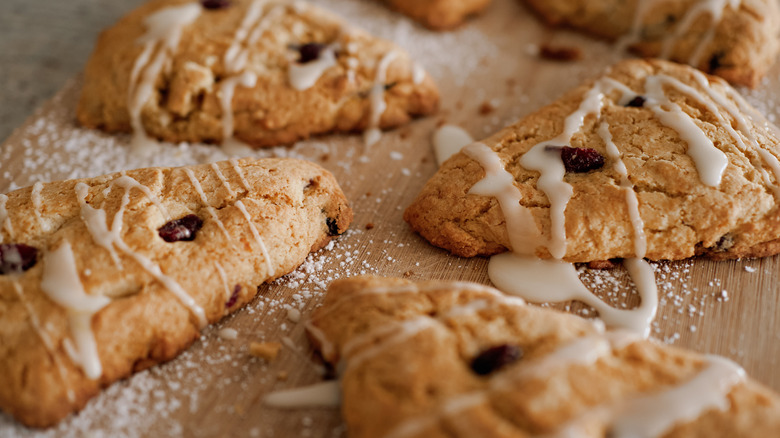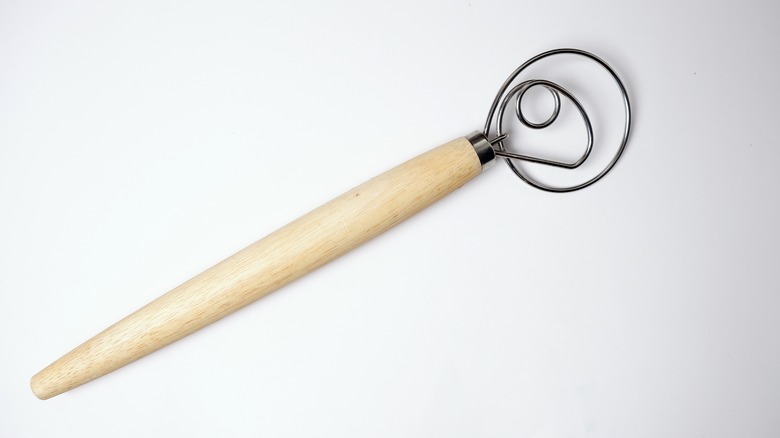The Best Type Of Whisk For Evenly-Distributed Bread And Scone Mix-Ins
We've all experienced mixing together pancake batter, bread dough, or even a favorite creamy country gravy recipe in situations where the whisk just isn't doing its job. Maybe it's too flexible for your ingredients. Maybe it's not beating out the chunks. Maybe you don't know exactly what the problem is, but you know that something really isn't right.
As it turns out, there's more than just one kind of whisk. The most common types include the balloon whisk, which is probably what you think of when you think of a whisk, the French whisk, and the flat whisk. While the French whisk differs from the balloon whisk in that it has fewer, stiffer wires, the flat whisk is, well, flat.
That being said, whisks get as weirdly specific as ball whisks, used for aerating recipes; coil whisks, used particularly in cups and small bowls; and twirl whisks, used solely for creating frothy drinks. You also have the Danish dough whisk, which is used for something you could probably guess, but we're going to tell you about it anyway.
Why bread bakers need a Danish dough whisk
The Danish dough whisk, to no one's surprise, is a great tool to have handy if you're mixing dough on the regular. Sometimes compared to the flat whisk, the Danish dough whisk is made up of a few differently-sized coils, almost like some kind of abstract spoon.
These coils are precisely what allow the Danish dough whisk to cut through dough like no other type of whisk can. No more dry pockets of clumpy flour. No more raisin landmines. No more precious ingredients left unused at the bottom of your bowl. That's a win, win, win in our books.
Although, as noted, these whisks are ideal for mixing dough and dry ingredients — but they're also great for any type of baking that involves mix-ins you want evenly dispersed. Chocolate chips, nuts, dried fruit: You name it, the Danish dough whisk can whisk it. Gone are the days of lumpy, unevenly mixed baked goods. We've truly leveled up, folks.

